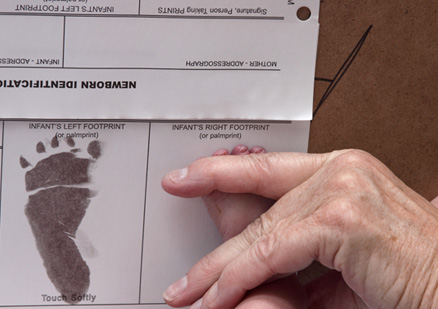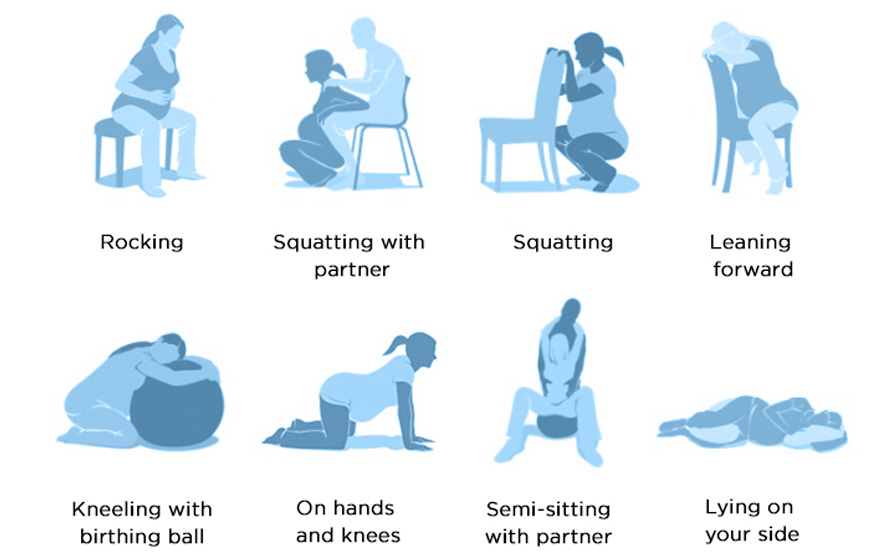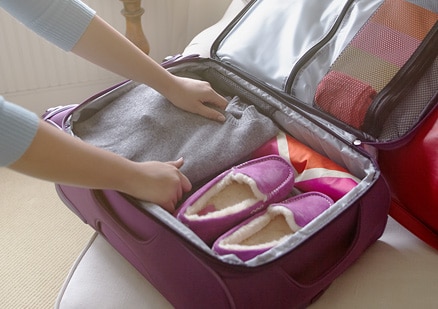The experience of giving birth

It’s a big day, 9 months in the making — your little one is ready to make their entrance. No 2 people experience labor and delivery in quite the same way, but the more you know about what to expect, the more you can focus on what really matters — the joy of meeting your new baby for the very first time.

How much will your hospital stay cost?
Get a personalized estimate based on your plan benefits. Only Kaiser Permanente members can use this secure feature, and you’ll need to be registered on kp.org.
Members: Get an estimate of how much you’ll pay to have your baby with us
*Cost calculator may not apply to members with a Medi-Cal plan.
Your labor and delivery care team
When you give birth to your baby at Kaiser Permanente, you may be surprised at how many people are there to support you — before, during, and after your delivery. They’ll all work together to help give you the happiest, healthiest birth possible.
Find out who’s in the delivery room
Planning an out-of-hospital birth?
If you’re a Kaiser Permanente member and choose not to have your baby in the hospital, let your care team know what your birth plan is. We’ll care for you during your pregnancy, help you prepare for your out-of-hospital birth, and talk about care for you and your baby after they’re born. If delivery day arrives and you need to come to the hospital after all, we’ll be here to support you through labor and delivery.
Stages of labor
It’s hard to predict exactly what your baby’s birth will be like — it’s different from pregnancy to pregnancy. But knowing what to expect can help you feel more relaxed and in control as labor progresses.
Learn what happens during labor and delivery
Labor and birth positions
Despite what you see on TV, most people don’t lie in bed throughout labor and delivery. Unless you have an epidural, you’re free to walk around and choose whichever position feels most comfortable to you. These common positions can help ease pressure and might even help labor progress more quickly.

Managing pain during childbirth
Pain is a normal part of labor and delivery. How you cope with it is up to you. We can help you with medication, or you can choose to manage it naturally. One of the most important reasons to make a birth plan is so everyone on your labor and delivery team knows how you want to manage pain. If you’re a Kaiser Permanente member, your care team can view all your birth plan information through your Health/Medical Record number.
But remember, you can change your mind at any time — a lot of parents do.
Learn your options for managing pain
Medical help during delivery
Most babies come into the world with very little help from us. Your labor and delivery team is primarily there to monitor you and your baby, and make sure everything progresses normally. But sometimes we do need to step in — and that’s what we’re trained to do. We even do simulation training to practice reacting to specific emergency situations. If you need extra help during delivery, knowing what to expect — and knowing that your care team is highly skilled and ready for anything — can help ease your mind.
Learn about common medical procedures during childbirth
Right after your baby is born
Right after your baby is born, we’ll check your little one’s heart rate, breathing, muscle tone, reflex response, and color. Once we make sure that you and your baby are doing well (as most new families are!), you’ll spend the first moments after delivery together. Your labor and delivery care team will be right there if you need them, but this special time is about you, your partner, and your new baby.
Skin-to-skin contact
During the first hour after birth, most babies are alert and curious. Holding your baby against your chest, skin-to-skin with no blankets or clothing in between, is a wonderful way to help your baby transition from life inside the womb to life in the outside world. Skin-to-skin contact after birth triggers healthy baby behaviors, helping your little one stay warm on their own, breathe on their own, and learn to nurse. It also helps your baby stay calm and cry less as they adjust to so many new sights, sounds, feelings, and experiences.
You’ll benefit from skin-to-skin contact, too. It helps your body produce breast milk, speeds up recovery time, and increases your level of maternal oxytocin — a hormone that promotes nurturing and bonding.
Breastfeeding for the first time
All babies are born with a natural instinct to search for the nipple. Many want to nurse right after birth, but others wait a little longer. We encourage you to try to breastfeed right away, because it helps the uterus contract and reduces bleeding.
Your labor and delivery nurse can help you get into the right position to breastfeed your baby, and let you know when your little one is latched on properly. After the first hour or 2 of bonding, nursing, holding, and gazing at your beautiful baby, you’ll probably both be ready to rest and sleep.

Did you know?
We’re big believers in the benefits of breastfeeding. That’s why we offer classes,1 lactation consultants, and breastfeeding support for members during pregnancy, at the hospital, and after you and your baby go home.
74.5% of babies born at Kaiser Permanente are exclusively breastfed. For babies born at other hospitals, the national average is 51.5%.2
Care for you after delivery
We’ll give you and your baby as much bonding time as possible, but we’ll be in to check on you both from time to time. We’ll also need to come into your room to:
- Cover you with a warm blanket. Shaking and chills are common after delivery.
- Rub your lower abdomen to help tighten your uterus and stop bleeding.
- Help you empty your bladder.
- Repair any tears or incisions if you tore or had an episiotomy.
- Remove the tube from your back if you had an epidural.


